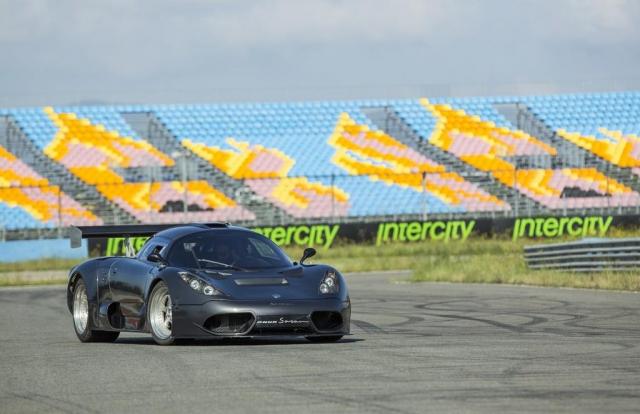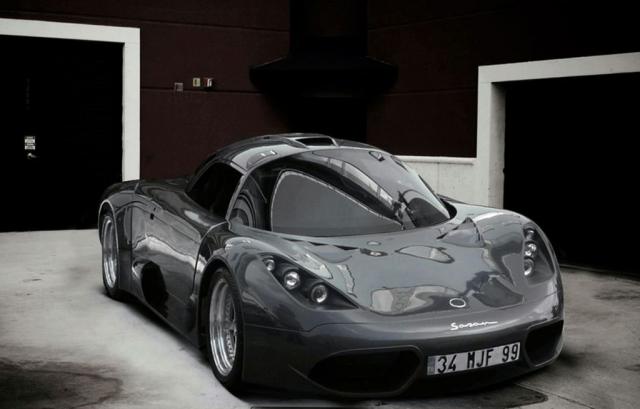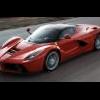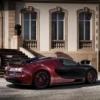Search the Community
Showing results for tags 'supercar'.
-
The Lamborghini Gallardo is no more, after the final model rolled off the production line at the manufacturer's Sant’Agata plant in Bolognese. The Gallardo had been on sale for 10 years, with over 14 thousand(14,022 to be exact) models being produced in that time – making it the most successful model to come from the Italian supercar manufacturer. First introduced at the Geneva Motor Show in 2003, the Gallardo marked the 40th anniversary of Lamborghini and in those 10 years we’ve seen an astonishing 35 variants of the Gallardo. The original Gallardo was powered by a 513bhp 5.0-litre V10 engine and within two years of its launch, the first special edition had been unveiled. The Gallardo SE debuted at the Frankfurt Motor Show in 2005 and was limited to just 250 models, it was so popular in fact, all models had sold before any of them had been produced. Changes to the SE included a power boost to 520bhp, a redesigned roof and a new-look interior. In the same year, the first Gallardo Spyder joined the range, which was followed by the Superlegerra in 2007. This was the first in a long line of stripped out and hunkered down Gallardo supercars, which seen an increase in power from the V10 engine and extensive use of carbon fibre to reduce weight. In 2008, a restyled and updated second-generation Gallardo LP560-4 was revealed at the Geneva Motor Show. It was also fitted with a new direct-injection 5.2-litre V10 engine developing 552bhp and was later followed by a Spyder, lightweight Superleggera and high-performance Spyder Performante versions, with the latter developing 562bhp – this was also the last Gallardo to be produced at the Sant’Agata plant. Next year, the replacement for the Gallardo will be unveiled, likely to be called the Cabrera. It should have close to 600bhp from Lamborghini’s latest version of the 5.2-litre V10.
- 3 comments
-
- lamborghinigallardo
- lamborghini gallardo
- (and 3 more)
-
Lexus show off electric LFA successor at Goodwood! https://insideevs.com/news/594373/lexus-lfa-successor-goodwood/amp/
-
<Noble M500 Supercar Packs EcoBoost V6 With a Gated Manual and No Airbags Don't count on anti-lock brakes to save you, either. Boutique British automaker Noble has reappeared with a fresh look at its long-coming supercar, the M500. Marketed as a slightly more tame version of its M600, the mid-engine sports coupe was first announced at Goodwood in 2018. When the hype faded, the world kind of forgot about the M500...until now. Recently, Noble broke its silence during a sitdown with Autocar. Noble’s Managing Director Peter Boutwood revealed how far the company has come in finalizing the M500, and how close the brand is in bringing the low-volume exotic to market. VIA NOBLE Just like its more powerful (and expensive) M600 brethren, the M500 is a two-seater, mid-engine sports coupe built to satisfy the person in the driver's seat—which is a Recaro Podium, by the way. The heart of the car is its 3.5-liter, twin-turbocharged V6 sourced from Ford; a definite departure from the M600's Volvo-bred V8. Presently, the Blue Oval's EcoBoost motor has been tweaked to produce 506 horsepower and 594 pound-feet of torque. Noble plans to up that figure to 550 hp at launch. Another change—arguably, for the better—is the lack of the originally promised dual-clutch automatic transmission in the M500. Instead, it will come with a proper gated six-speed manual transmission sourced from Graziano. No automatic option will be offered, period. Autocar warns that this means it likely won't have the straight-line acceleration figures of a supercar competitor with an automatic transmission, so don't bet on this against a McLaren 570S. Even still, it ought to be plenty fun to drive. Just about everything on the M500 is as mechanical as it can get. Each corner is supported by a double-wishbone suspension and coilover springs paired with passive dampers. Power steering is hydraulic to keep the driver connected to the road, and it doesn't even have anti-lock brakes or airbags. Noble elaborates that this M500 is a "working prototype" and as such, some things are still set to change. The rear wing might get a bit more angle once it completes high-speed testing, and it may fluctuate in poundage like a wrestler trying to make weight. The M500 prototype presently tips the scale at around 3,086 pounds (1,400kg), but its production-ready version could reportedly shave off another 330 pounds. Noble says it will also offer the M500 with some carbon fiber upgrades, meaning that the weight could dip down even further. VIA NOBLE Noble says that despite not having an MSRP set in stone, the first customer orders—and subsequently, deliveries—will begin later this year. Boutwood says that the company is aiming for a price of around $205,000 (150,000 British Pounds, or around $70,000 less than the Noble M600), which it hopes puts the car in the realm of purchase for Porsche owners. With a less labor-intensive build and (relatively) more affordable price, Nobel hopes to pump out around 50 examples of the M500 each year. However, the chance of any making their way to the United States seems slim for now.>
-
https://www.roadandtrack.com/car-culture/a38212473/cheap-part-that-starts-every-lexus-lfa/ <The $7 Part That Starts Every Lexus LFA The Lexus LFA was one of the last supercars to use a physical key to start—and the ignition switch is shared with the lowly Tercel. The keyed ignition switch is nearly a thing of the past. Today, even base-model economy cars are showing up with keyless push-button start. But it wasn’t so long ago that even top-end cars had traditional metal keys. One of the most recent examples is the Lexus LFA, an otherworldly supercar built from cutting-edge carbon fiber-reinforced polymer and powered by one of the best sounding engines in the history of the automobile. And yet, to start that V-10 engine, you have to twist an ignition switch with utterly humble roots. Welcome to The Parts Department, where we follow basic car components to their strangest destinations. Toyota part No. 84450-12200 is a keyed ignition switch that was nearly ubiquitous in the automaker’s North American products starting in the mid-Nineties. It first appeared in the dashboards of cars like the Tercel and Paseo before spreading to the rest of the Toyota and Lexus lineups over the next decade and a half. At its peak, this ignition switch was used in almost every Toyota and Lexus made in the early 2000s, before slowly dropping off as push-button ignitions were introduced. Around 2010, it seemed like the switch was done for good in the Lexus lineup. The only Lexus left that used 84450-12200 was the aging SC 430, which was cancelled after the 2010 model year. But then our humble ignition switch reappeared in 2011, in the dashboard of Lexus’s new performance halo, the LFA. The screaming supercar’s key may have been adorned with milled metal and carbon fiber, but it operated the same tumbler found in the lowly Tercel. The LFA’s ignition key and tumbler were dressed up with carbon fiber, but underneath was the same old part. - LEXUS No. 84450-12200 had a much longer life in the Toyota lineup, appearing in the 4Runner up until this year (SmartKey push-button starting finally becomes standard equipment on the SUV for 2022). The ignition switch also appeared in the Scion iQ, TC and xB from 2005 to 2016, when the brand folded. Our friendly ignition switch retails for $114.53 from Toyota and Lexus dealers, but online OEM discount stores typically sell it for just under $80. Thanks to the fact that it’s shared across so many Toyota and Lexus models, the switch is a popular item in the aftermarket, with nearly a dozen companies offering their own versions to fit. The cheapest version, from Ultra-Power, costs less than $7. TOYOTA PARTS While the North American models that use this switch are all familiar names, overseas parts catalogs show that 84450-12200 was used in a wide array of Japanese and European-market vehicles. They range from quirky MPVs like the Toyota Picnic to utilitarian vehicles like the Townace. Built from 1985 to 2007, the cab-over-engine Townace, available as a van, pickup or cube truck, is about as far as you can get from the Lexus LFA supercar—which just goes to show that, even when Toyota was building an ultra-limited-production supercar with a mid-six-figure price tag, the company still relied on its extensive parts bin for reliable, mundane components. Toyota Townace Noah - TOYOTA Much like the manual transmission, traditional metal ignition keys are on their way out. The LFA may have been one of the last supercars with a conventional key-switch ignition. But coincidentally, Toyota was at the forefront of a recent revolution in ignition keys, as one of the first automakers to introduce laser-cut keys. This was one of many innovations that debuted on the 1990 Lexus LS 400, the car that launched the Lexus brand in North America. Toyota started slowly phasing out turn-key ignition in the United States in the mid-2000s. A push-button start switch appeared first on the 2004 Toyota Prius, then spread across the rest of the hybrid lineup. Today, Toyota’s start button is so widespread, it even appears in the company’s race cars: The Lexus RC F GT3 car that I work on as a pit crew member uses the same start button you’d see in a street-legal Lexus, and the Toyota GT86 TCA race car also has a production-style start button. In today’s supercars, you start the engine with a switch, button or knob, usually made of a high-quality metal or composite that echoes the advanced materials found in the body or chassis—and activated by a gorgeously designed electronic key fob in your pocket. It’s nice to know that, not very long ago, a simple and robust key-switch ignition was able to make its way from a humble economy car all the way to the ultimate halo of the Lexus brand.>
-
Hey guys ! Just curious and wanting to know cars that have a similar technology to what Formula 1 car has. The closest could ever get to a formula 1 car and why. Could be looks, technology, speed, all of the above? you name it. Personally my top 2 picks are the LaFerrari as it is as close as it could get to a F1 car for its technology, and Lexus LFA for its Screaming V10 sound.
-
If you think your loud-sounding car is safe from the authorities just because you stay in a private property, you might want to think twice now. A photo of a Ferrari 488 GTB being inspected inside someone's front yard has been circulating around in most car group chats over the last weekend. From what we understand, it is almost unheard of for LTA enforcement officers to venture into a non-public area to inspect a car that might be flouting the laws. While we are unsure of the reasons while this particular Ferrari is being looked at, we reckon the reason might be neighbours who are unhappy about the loud exhaust noises emitting from the car. On a side note, those who are in the know will wonder why the officer is looking under the car when its belly is all covered up... Check out what neitzens on SG Road Vigilante have to say about this. Let us know if you agree!
-
Supercar vs Hypercar — What’s the Difference? https://gearpatrol.com/2020/01/19/supercar-vs-hypercar/ It’s obvious to most anyone that a Corvette or Lamborghini are different than a Corolla. There are many terms thrown around to describe outrageous performance cars. But in the upper echelons of performance, things get muddy; often, we use terms like “supercar” and “hypercar” interchangeably while in practice they are two different types of cars. Supercar Hundreds of horsepower, million-dollar price tags, lap times that make most race cars blush — these are supercars. They’re the top range of today’s performance cars, and the specs they boast outshine the best of yesteryear’s race cars. The term “supercar” is a catch-all first used in the London newspaper The Times back in 1920 to help describe the incredible 6.7-liter Ensign 6. Today, the term is used to describe cars with the best performance, technology and design that the automotive industry has to offer. Supercars can be best defined with their most common characteristics: performance, technology, design and price. They don’t need to hold elevated status in all four characteristics to qualify, and most often performance is then used as the ultimate yardstick. Case in point, the Corvette C7 ZO6. It puts up amazing numbers and lap times and has a compelling design, but only costs $80,000, significantly lower than its competitors. Despite the low price, it’s still a supercar. The McLaren 650S has design language handed down from the P1 and sub-three-second 0-60 times but offers nothing in the way of unique or boundary-pushing technology. Also a supercar. Then you have a simplistic car like the Ariel Atom V8. There’s little to speak of in terms of design since it’s basically a cage on wheels. It also costs a fraction of the cost of any other claimed supercar, yet it can outrun most of them around a track. The Ariel Atom’s race-car level of performance makes up for the simplistic design, basic tech and relatively low price. Supercar. But, to get to hypercar status, a car has to meet all the characteristics of a supercar, and push the boundaries of performance, technology and design. Hypercar Then there is the term “hypercar,” coined to qualify the top one percent of supercars. All hypercars are supercars, but not all supercars are hypercars, and while the qualifiers that allow a car to be elevated out of supercar territory and into the hypercar pantheon aren’t obvious, it’s clear with a few examples. The Ferrari 458 is a fantastic supercar, but it does not match the technological marvel of the 1,500 horsepower Bugatti Chiron hypercar. The McLaren P1, Ferrari La Ferrari, Porsche 918: all near 1,000 horsepower, with first-class new-age technology, million-dollar price tags, stunning design and performance rivaled only by each other. Almost every aspect of each car is an advancement in automotive technology and puts them high atop the motoring totem pole. Hypercars are the stick against which all cars are meant to be measured, and not a single compromise can be made. Blurring the Lines With supercars becoming exponentially more advanced and better performing, qualifications for hypercar status have become more stringent. They represent the forefront of engineering and the most extreme design, but with each new generation, the outgoing tech and styling become dated. And at the same time, the critics become callous towards what we call “extreme.” Top speeds of 185 mph used to belong to only the most exotic metal. Now, cars like the BMW M5, a family sedan, can top that. It’s what causes a car like the Lamborghini Murcielago, once an undisputed hypercar, to slide down the ladder every time a new, more batshit-crazy version of the Aventador is unveiled. Simpler performance tech pioneered by hypercars, such as movable aerodynamics, is already appearing on supercars like the Ferrari 488 GTB. Eventually, it will be the norm in the supercar world to see hybrid powertrains like the ones in La Ferrari and the P1 — though at the moment that technology is too complex and expensive to put in the higher production numbers of less exclusive supercars. The fact that the tech trickles down to supercars is also what demands hypercars to stay at the forefront. What we think of as extraordinary today is destined to become commonplace tomorrow.
-
The Most Affordable Supercar | Apex AP-0 https://apex-motor.com/car-ap0
-
Pretty fun to play with this configurator.... http://www.lambocars.com/configurator/lamboconfigurator_hfddbaahy17aaaaaaacbabaaaaaaaaaaa0aaaadbg.html Mine would look like this... Lets see who else can come up with something better!
- 8 replies
-
- lamborghini
- lambo
- (and 5 more)
-
totally should read MAHATHIR want to manufact supercars instead of msia... ISTANBUL — Malaysian Prime Minister Tun Dr Mahathir Mohamad has pictured the possibility of Malaysia producing "super cars" in order to further enhance the capability of the nation’s automotive industry. Dr Mahathir said Turkish supercar producer Onuk had indicated willingness to cooperate with Malaysia to produce the exotic vehicle. Dr Mahathir said he had long been aware of Turkish companies’ capability but only now he could see it first-hand. “I was aware of their capability. But there was no follow-up at the time as I was not the prime minister then, so making progress would have been difficult. “And now they are ready to collaborate... not only with that type of car (super car) but also with other cars,’’ he said . Dr Mahathir was speaking to Malaysian reporters at the end of his official visit to Turkey at the Istanbul Sabiha Gokcen International Airport (ISGIA) on Sunday (July 28). The Onuk Sazan and Onuk S56/G super car models areexhibited at ISGIA and Dr Mahathir took the opportunity to check them out before he left for home. On Friday, Dr Mahathir had a dialogue session with Turkish captains of industry, and offered them Malaysian expertise to produce their own national car based on the success garnered by Proton and Perodua. Meanwhile, Dr Mahathir praised Malaysia Airports Holdings Bhd's (MAHB) success in managing (ISGIA) Turkey’s second largest airport — showing Malaysian companies’ capabilities as well as their ability to expand their operations abroad. He said that although MAHB operates airports in several other countries, ISGIA — which the company wholly owns — is the largest, handling 34 million passengers annually. “It’s much larger than KLIA (Kuala lumpur International Airport), and its management is something special. There are people who recognise our capability in this field and give us a lot of opportunities," said Dr Mahathir. On Friday, Dr Mahathir visited ISGIA, which was taken over entirely by MAHB in 2014, and witnessed its operations. Opened in January 2001, the airport is the second busiest in Turkey and the world’s busiest single-runway airport and terminal. Located some 45 km from Istanbul, it recorded 16.7 million passenger traffic movements as of June this year over first half of 2019, up 3.4 per cent over the same period last yeaar. In 2018, it posted 34.1 million passenger traffic movements and revenue of RM1.15 billion (S$382 million). NEW STRAITS TIMES
-
Car from Bulgaria, but is this design familiar? Bulgaria’s Alieno Is Promising A 5,221 HP Electric Hypercar https://www.carscoops.com/2018/07/bulgarias-alieno-promising-5221-hp-electric-hypercar/ It’s been some time since a claimed supercar manufacturer has appeared out of nowhere with promises of a game-changing vehicle. However, Bulgaria’s Alieno has put an end to that dry spell, unveiling its first proposed model. As per usual, it is making some bold claims. The company was reportedly formed in 2015 and gets its name from the Italian word ‘alieno’ which translates to alien. Despite having no experience in the automotive space, the company claims to be working on its first ever model, dubbed the Arcanum, complete with performance specs to rival the Devel Sixteen. Four variants are said to be in the works. The first delivers 2,610 hp and 3,275 lb-ft of torque, the next most powerful pumps out 3,482 hp and 4,366 lb-ft, a third model comes with 4,351 hp and 5,458 lb-ft while a flagship features 5,221 hp and 6,490 lb-ft. No, you’re eyes are not deceiving you, these really are the claimed figures. As you probably guessed, these insane figures won’t be achieved with a road-legal internal combustion engine. Instead, all models will utilize a “direct drive electric powertrain.” In range-topping 5,221 hp guise, this powertrain will apparently consist of six electric motors per wheel to make for a total of 24 small electric motors, each of which can be controlled individually. Performance will be brisk to say the least. While Alieno hasn’t published acceleration times, it claims the 5,221 hp model will reach 303 mph (488 km/h). The size of the battery pack, complete with graphene LiPo cells and supercapacitors, varies between 60 kWh and 180 kWh and in its largest form, delivers up to 634 miles (1020 km) of range on a single charge. The bold claims don’t stop here. Alieno says the Arcanum uses so-called “robotic suspension” alongside traditional double wishbones, pushrods, and adjustable anti-roll bars. Braking will be provided by a hydraulic system, a regenerative electromagnetic system and air braking. Alieno says its order books for the Arcanum are now open, with prices ranging from €750,000 ($878,000) to €1.5 million ($1.755 million) depending on the model. Don’t be surprised if you never hear of Alieno again.
-
Hi All, had a friendly debate with a fellow petrol head. I was for turbo S being a super car. He was against . My argument was turbo S has 580hp and is probably the fastest accelerating car, minus the tesla. His argument was turbo S doesn't evoke the emotions like a lambo or ferrari. So my question is what make a car a supercar? Price, history, horespower, looks? what about aston, mclaren and bentley?
- 45 replies
-
- 1
-

-
https://www.autocar.co.uk/car-review/ford/gt/first-drives/ford-gt-2017-uk-review Looks chio...
-
Ever wonder what happens to all those supercars that go to the Persian Gulf? After seeing this images, we kinda wished we hadn't. This Jaguar XJ220 – a veritable poster child for the dawn of the modern supercar era, the one-time standard bearer of the 200 MPH Club and one of only 281 produced – made its way from Coventry to Lebanon, then through a Dubai dealership before finally ending up in Qatar. With only 900 kilometers (560 miles) on the odometer, this big cat has clearly been subjected to more abuse than any supercar lover (or animal rights activist) could possibly stand to see.
- 7 replies
-
- rare jaguar
- jaguar xj220
-
(and 2 more)
Tagged with:
-
http://thesupercarkids.com/tim0456-from-singapore-has-bought-a-laferrari/?utm_source=rss&utm_medium=rss&utm_campaign=tim0456-from-singapore-has-bought-a-laferrari
-
From its unique architecture to its amazing skyline and eyewatering prices, the United Arab Emirate of Dubai has always done things very differently. Never afraid to flash its excess wealth, and famed worldwide for its conspicuous consumption, it’s no surprise that the local constabulary has accumulated the most exotic stable of police cars in the world. Lamborghini, Aston Martin, Ferrari and more... it’s every petrolhead’s wishlist of motoring exotica, but a daily drive from some for the lucky officers serving in the desert. We take a look at the cars that will be on your tail if you’re foolish enough to consider speeding in Dubai, the land where the PCs most certainly aren’t plodders... BMW M6 Gran Coupe Engine: 4.4 V8, 552bhp | Top speed: 250km/h | 0-100km/h: 4.1 secs A relatively tame part of Dubai Police’s fleet, but BMW’s legendary ‘M’ badge signifies there’s no shortage of power. With a 4.4-litre V8, the M6 Gran Coupe is propelled from 0-100km/h in 4.1 seconds, on its way to a limited top speed of 250km/h. At just under £100,000, this is one of the cheaper cars on the fleet, but rest assured those sumptuous leather seats will keep criminals comfortable. Mercedes SLS AMG Engine: 6.2 V8, 591bhp - Top speed: 320km/h - 0-100km/h: 3.7 secs As supercars go, few would deny that the Mercedes SLS AMG is a work of art, with its generously proportioned front end sweeping back to a dramatic set of gullwing doors. The Mercedes produces almost 600bhp from a 6.2-litre V8, and is capable of nearly 320km/h, doing 0-100km/h in under four seconds. Now where do the bad guys sit? Lamborghini Aventador Engine: 6.5 V12, 690bhp | Top speed: 350km/h | 0-100km/h: 2.9 secs A product of Lamborghini’s famous factory at Sant’Agata, the Aventador is striking in every way. Its rakish lines and aggressively flared arches and intakes give it a presence few cars can match. And with a massive 690bhp from the 6.5-litre V12 engine, this bull can charge to 350km/h and from 0-100km/h in a mightily impressive 2.9 seconds. But at £265,900, it’s definitely no cheap thrill. Aston Martin One-77 Engine: 7.3 V12, 750bhp | Top speed: 354km/h | 0-100km/h: 3.7 secs This is as special as they come from the legendary British maker. As the name suggests, the Aston Martin One-77 was a limited release of just 77 models worldwide. Beautifully hand-crafted materials and an obsessive attention to detail mark the car out. It’s no slouch, either, with 750bhp from a V12 and a top speed of 354km/h. The force’s accountant may be concerned at the £1,150,000 price tag, though. Ferrari FF Engine: 6.2 V12, 651bhp -| Top speed: 335km/h | 0-100km/h: 3.7 secs Practical and Ferrari are two words you rarely hear in the same sentence. The Ferrari FF is an exception, though, because it is a genuinely practical supercar with space for four occupants in a shooting brake bodystyle – the perfect choice for transporting criminals to the station quickly, thanks to its 651bhp V12 engine. Another costly addition to the Dubai police fleet. Bentley Continental GT Engine: 6.0 W12, 567bhp | Top speed: 317km/h | 0-100km/h: 4.3 secs Another British car, the Bentley Continental GT is a fine choice due to its superb refinement and quality. It’s hand-made at Bentley’s famous Crewe factory, and every effort is made to produce the perfect car, tailored to buyers’ every request. The 6.0-litre W12 engine catapults the car to just shy of 321km/h, and dispatches the 0-100km/h sprint in 4.3 seconds. Ford Shelby Mustang Roush Edition Engine: 5.0 V8, 575bhp | Top speed: 236km/h | 0-100km/h: 4.5 secs The Ford Mustang costs small change in relation to the other cars on the fleet, but doesn’t disappoint. This ‘pony car’ is more of a cobra, something its Shelby badge backs up. Modifier Roush has added even more power to the Ford, which features a highly tuned 5.0-litre V8. This pushes out 575bhp and gets the car from 0-100km/h quicker than the Bentley. It costs under a third of the price of its British rival, so what’s not to like? Whether it's for practical or publicity purposes, do you think it makes sense for the Dubai police force to run such an incredible fleet of supercars? What would the response of our tax payers be if Singapore police force attempted the same thing?
-
http://www.youtube.com/watch?v=3RuUp5MT3Uc 3 weeks old race but for cars lovers nice to watch
- 1 reply
-
- 2
-

-
- mercedes-benz
- 2014
-
(and 1 more)
Tagged with:
-
http://www.roadandtrack.com/car-reviews/car-comparison-tests/v-8-supercars-the-comparison-65-7-roa0314 http://www.roadandtrack.com/cm/roadandtrack/data/ROA040114FEA_ComparoMarkup-1.pdf http://www.roadandtrack.com/cm/roadandtrack/data/ROA040114FEA_Comparo-2.pdf V8 Supercars Sedan Showdown - Comparison Tests - Road & Trac.pdf
- 9 replies
-
- bmw m series
- supercar
-
(and 5 more)
Tagged with:
-
http://www.youtube.com/watch?v=_rxW_3ZAVHcKen Block's Gymkhana series still hasn't grown old for us, perhaps because it pleases the inner child we never quite managed to outgrow. But now the world has a new challenge: Supercar Gymkhana. In this case, it's Lambokhana, as Daily Driven Exotics' Damon Fryer takes this Gallardo out for a tire-punishing spin around a homemade gymkhana course. Is it as fast as Block's rally car? No. Are the props and stunts as off-the-charts mental? Nope. Are those moving donuts around a rolling tire awesome? You betcha. Bottom line: if you've ever wanted to see a Lamborghini getting thrown around in a gnarly industrial lot, powersliding its tires into oblivion, this is your video.
-

A quick tour around supercar maker Arash's factory (VIDEO)
Nic_low posted a blog entry in MyAutoBlog
Arash has been around since 1996. The supercar manufacturer has even churned out a number of models till present, such as the Farboud GT, Farboud GTS and AF10 - though it has yet to make an 'impact' on the market. Recently, YouTube user Shmee150 has presented a video which offers interesting insights on how things works within the small-scale boutique automaker, as well as the company's new AF8 - a 7.0-litre V8 550bhp supercar.- 3 comments
-
The Audi R8 V10 Plus. What a memorable experience. Not having driven a supercar before, I was intimidated by its width at first but soon enough, i gained confidence and boy oh boy, it was a lovely drive. This is definitely ranked pretty high up there as one of my all time favourite drives. I say so because I found myself missing that V10 note, the very responsive gearbox, the security of the quattro system and yes.. did i already mention the V10 note? Anyway, here are some unpublished photos of the feature where the R8 starred in. Hope you readers like it! The V10 Plus comes with harder spring and damper rates than the lesser V8 and V10 models. It rides pretty firm but never crashes into the bumps when going over the rougher stuff. Still pretty good considering it loses the magnetic system which the normal V10 gets. 0-100km/h in 3.5 seconds and 0-200km/h in 11.3 seconds. Credit goes to the engine in the above photo. Plus variant means more carbon fibre parts inside and outside. All in all, 50kg of weight has been shaved compared to the normal V10 R8. Love the way the door handle protrudes towards the driver to allow him/her to open for the door easily. Some may argue that this makes the car feel dated but to me, only a proper handbrake is right. Fun ends at 8,700rpm. Paddles are a joy to use. B&O sound system performs well but the V10 sounds better actually! Sideplates finished in carbon. Sexy. LED headlights piercing through the thin mist on a very cool night..
-

McLaren chases the 458 Speciale with the dynamic 650S
Akram_saheed posted a blog entry in MyAutoBlog
Based on the 12C super car, albeit with the face of the McLaren P1, McLaren Automotive expands its young lineup with the McLaren 650S - which would formally debut on the 4th of March, at the forthcoming Geneva Motor Show. Like the 12C, the 650S is available either as a Coupe or a Spider with a retractable folding hard top. According to McLaren, the 650S promises to redefine the high-performance supercar segment, and has been designed and developed to provide the ultimate in driver engagement on both the road and the race track. The badge designation refers to the power output - 650PS - amounting to 641bhp - from the British-built McLaren M838T twin turbo V8 engine, while 'S' stands for 'Sport'. Inspired by the McLaren P1, the front bumper and the better integrated front splitter contribute to increased levels of downforce, for a greater level of steering feeling and confidence to the driver on turn-in, while also adding to the agility and handling. A new design five-spoke lightweight forged '650S' alloy wheels are unique to the model, and are fitted with Pirelli P Zero Corsa tyres for optimised road holding, handling and driver feedback. The bespoke 'MC1' branded tyres have been developed alongside the 650S by Pirelli. The McLaren Airbrake, now operates with a greater level of functionality providing increased stability. The newly developed system deploys the Airbrake when the car requires added downforce - instead of braking or when manually operated in 'Aero' mode. Below the Airbrake, a distinctive rear three-piece bumper, similar to the GT3 racing version of the 12C, compliments the aerodynamic shape of the McLaren 650S. Active aerodynamics featured on its stable of cars have been further developed and honed to ensure the ultimate performance and ability for the 650S. Enhanced levels of specifications are also available as an added option. These include fixed-back carbon racing seats, an electric steering column adjustment, a rear parking camera and extended carbon fibre throughout the interior.- 5 comments
-
- mclaren automotive
- geneva motor show
- (and 5 more)
-
The Lamborghini Huracán has already obtained 700 orders during a, as yet unfinished, month-long private preview tour worldwide for VIP clients. An excellent start for the heir to the best selling Lamborghini to date, the Gallardo. The Lamborghini Huracán LP 610-4 is powered by a 610-horsepower 5.2-litre normally-aspirated V10 engine, which allows it to reach a top speed of 325 km/h and accelerate from 0 to 100 km/h in 3.2 seconds, placing it at the top of its segment. A candidate for 'star of the show' at Geneva Motor Show, it will be the first vehicle to be revealed at the exhibition, during a press conference given by President and CEO Stephan Winkelmann, scheduled for 8 a.m. on Tuesday March 4th, 2014. The presentation will contain innovative elements -- not just the video of the supercar shot over the last few days in Los Angeles, but also the reveal.
- 5 comments
-
- lamborghini
- huracan
- (and 4 more)
-
Lamborghini has released a new video that gives us our first look at the 2015 Huracán LP 610-4 in action. The Huracán is designed to replace the Gallardo as the Italian automaker's smallest and most affordable model. http://www.youtube.com/watch?v=ewwsgIt6VQg The final installment of a YouTube series dubbed the "Hexagon Project," the video opens as three friends have snuck into Lamborghini's factory in an attempt to be the first to see the Huracan. Miraculously, they manage to find an unguarded example of the new supercar complete with keys, and proceed to take it for a spirited drive full of drifting and donuts before a team of security guards brings the fun to an end. Skip ahead to the 1:50 mark for the tire-scorching melee.
-
- lamborghini
- gallardo
- (and 4 more)
-
This is the Lamborghini Huracan, the replacement for the Gallardo supercar. After numerous spy shots and leaked images Lamborghini has taken the wraps off its baby supercar, which is set for a public debut at the Geneva Motor Show in March before making its way to the UK in the autumn. Initial reports suggested the car would be called the Cabrera but Lamborghini has opted instead for Huracan LP 610-4. Like the Gallardo before it, the Huracan name derives from the world of bullfighting, with this particular breed known for its courage and sense of attack. The Huracan follows Lamborghini tradition with an audacious design full of sharp edges and defined creases. It adopts several Aventador styling cues such as the narrow triangular headlights and short bonnet. Viewed in profile, the Huracan is unmistakably Lamborghini, with the rear quarter getting similar upper and lower vents around the engine bay as the Murcielago. Based on an all-new aluminium chassis with structural carbon-fibre elements, the Huracan weighs 1,422kg and will share its platform with the second-generation Audi R8, due in 2015. Nestling behind the driver is an updated version of the 5.2-litre V10 engine delivering 601bhp at 8,250rpm, up from 552bhp in the Gallardo. The engine features new “Iniezione Diretta Stratificata” (IDS), direct and indirect gasoline injections which are smartly combined resulting in more power and torque with lower fuel consumption and emissions compared with the Gallardo V10 engine. From a standstill the Huracan will hit 100km/h in 3.2 seconds, and stops as well as it goes, too, thanks to carbon ceramic brakes fitted as standard. Despite the substantial increase in performance, economy has also improved to 9.6km/l while emissions are down from 351g/km to 290g/km. Replacing the clunky old automated manual gearbox is a new seven-speed dual-clutch ‘box delivering power to all four wheels. Three different driving modes – Strada, Sport and Corsa - can be selected from a steering wheel mounted selector – much like the Ferrari 458 Italia’s Manettino switch. Each mode alters the throttle response, traction control and ferocity of the gear changes. The Huracán will be produced at Lamborghini’s headquarters in Sant’Agata Bolognese on an entirely newly-equipped production line.
- 3 comments
-
- lamborghini
- gallardo
-
(and 5 more)
Tagged with:
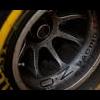


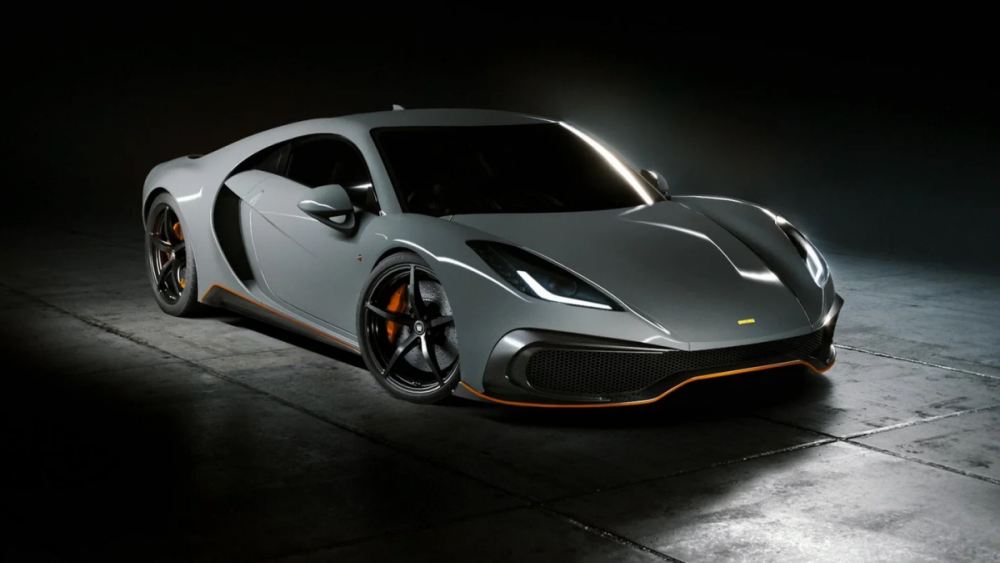
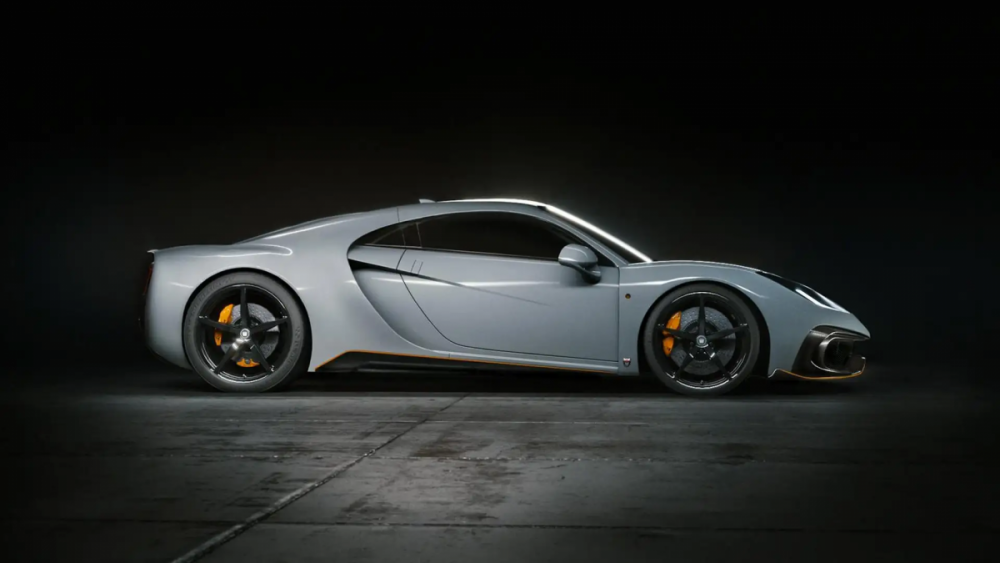
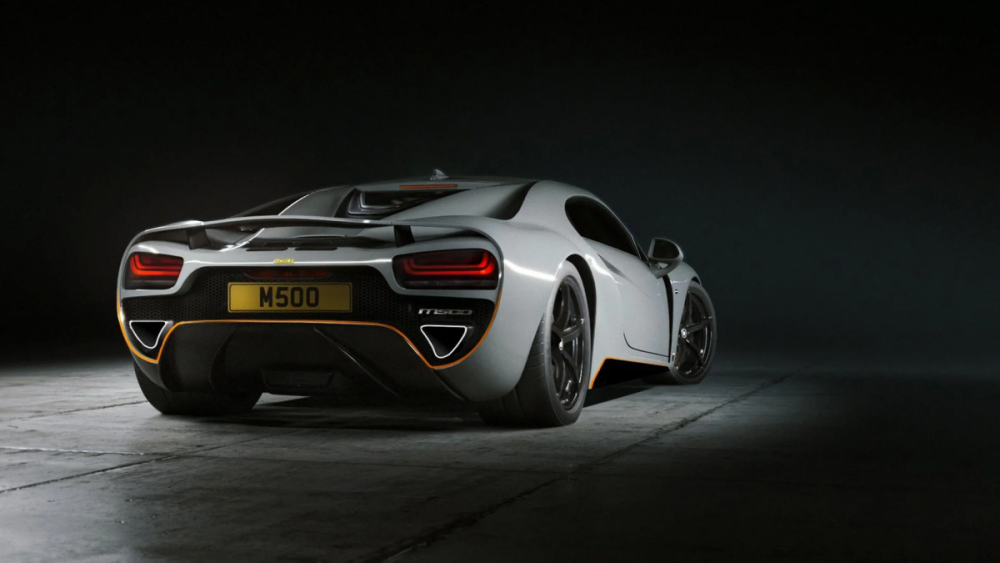
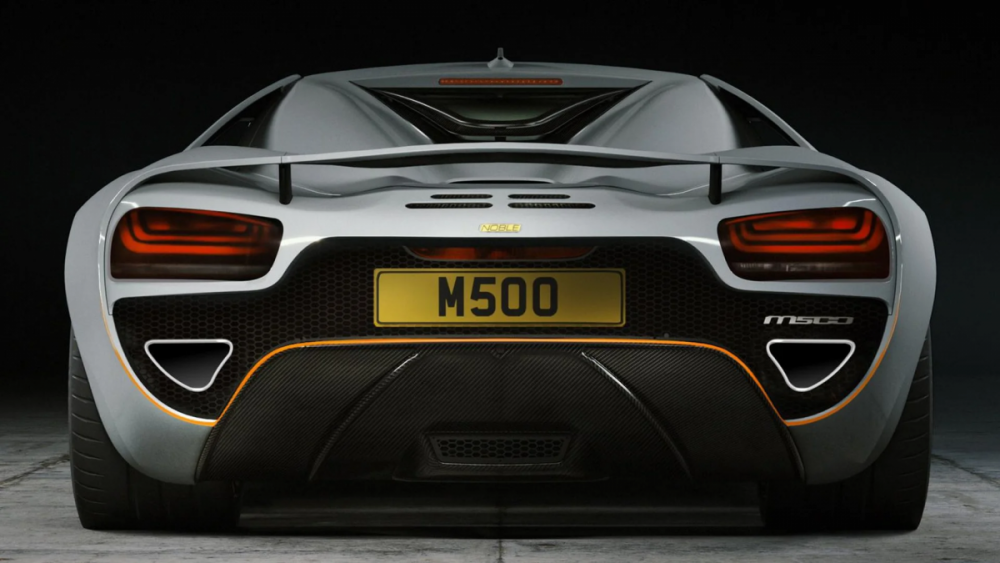
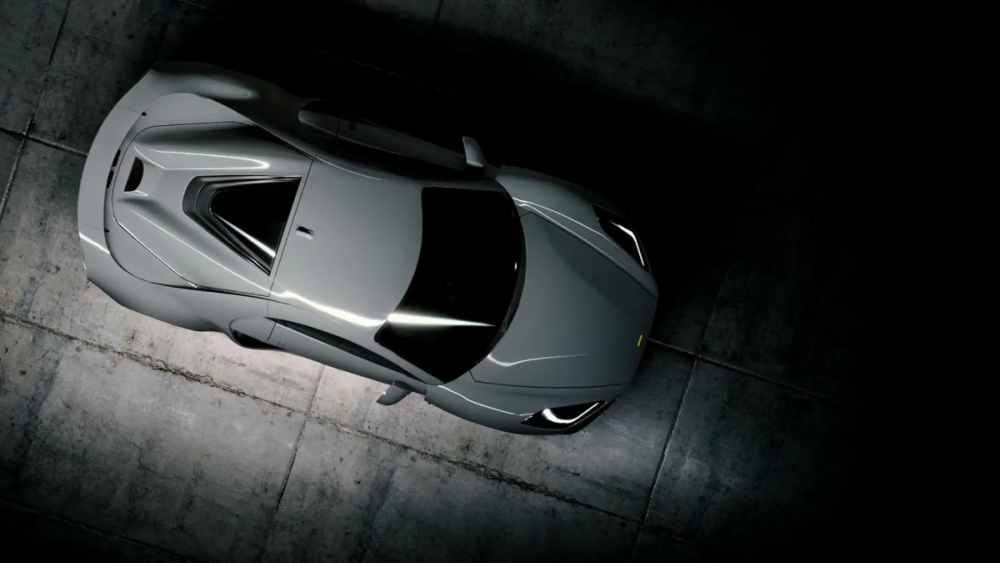
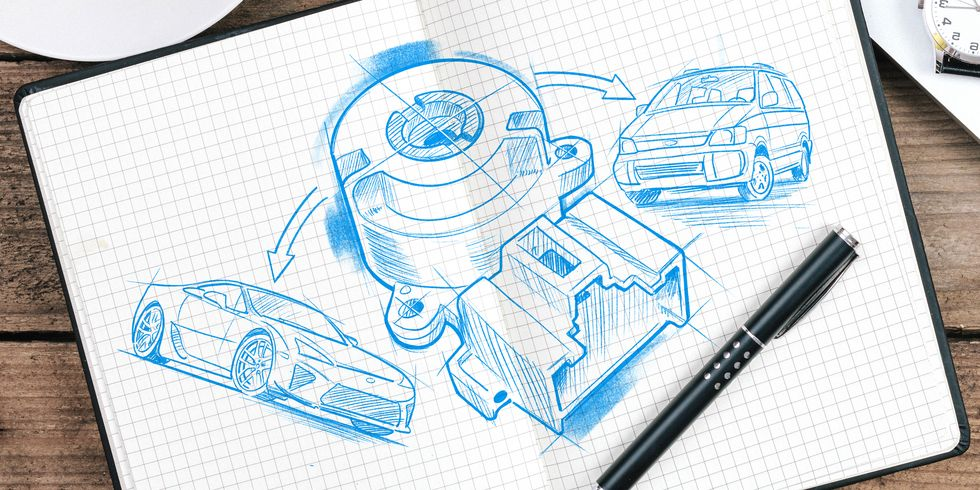
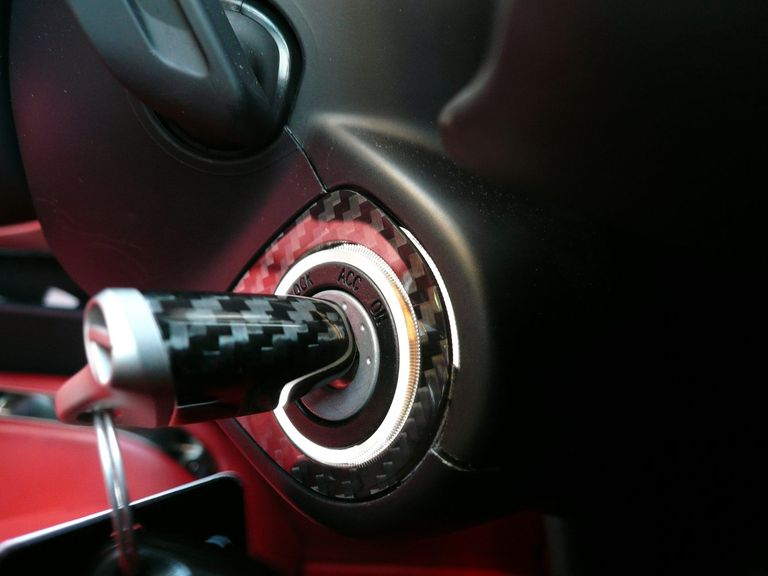
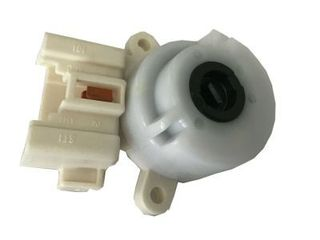


.png)




